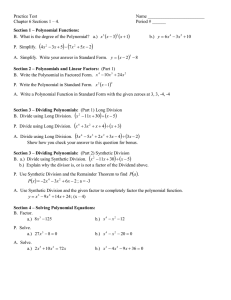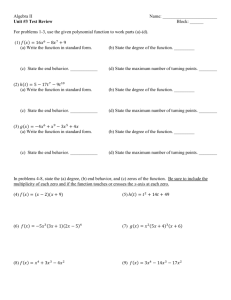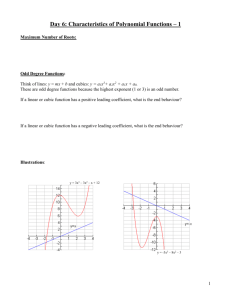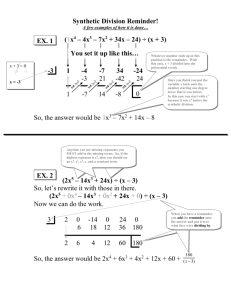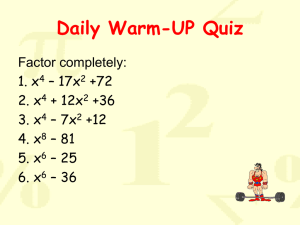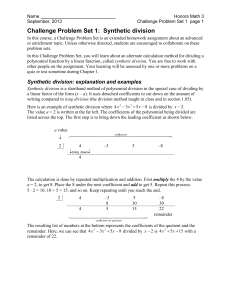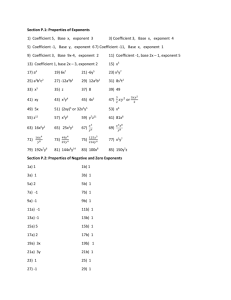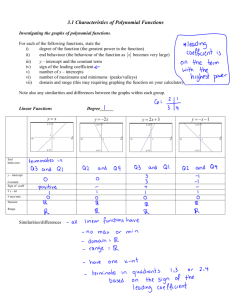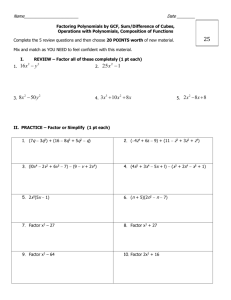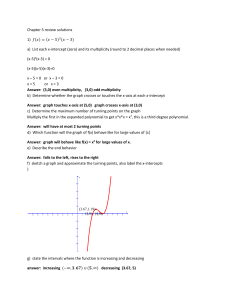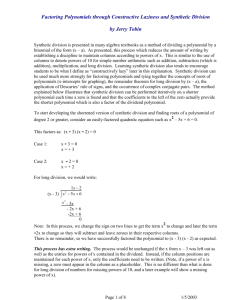Topic
advertisement
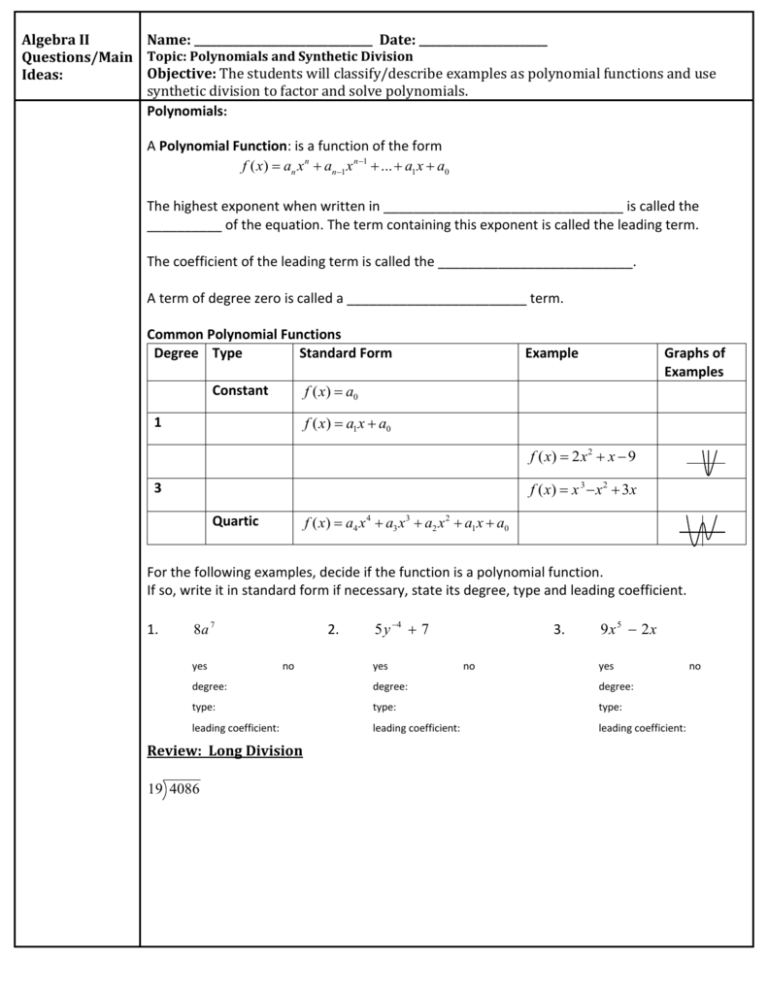
Algebra II Name: ________________________________ Date: _______________________ Questions/Main Topic: Polynomials and Synthetic Division Objective: The students will classify/describe examples as polynomial functions and use Ideas: synthetic division to factor and solve polynomials. Polynomials: A Polynomial Function: is a function of the form f ( x) an x n an 1 x n 1 ... a1 x a0 The highest exponent when written in ________________________________ is called the __________ of the equation. The term containing this exponent is called the leading term. The coefficient of the leading term is called the __________________________. A term of degree zero is called a ________________________ term. Common Polynomial Functions Degree Type Standard Form Example Graphs of Examples f ( x) a0 Constant f ( x) a1 x a0 1 f ( x) 2 x 2 x 9 f ( x) x 3 x 2 3 x 3 f ( x) a4 x 4 a3 x3 a2 x 2 a1 x a0 Quartic For the following examples, decide if the function is a polynomial function. If so, write it in standard form if necessary, state its degree, type and leading coefficient. 1. 8a 7 yes 2. no 5 y 4 7 yes 3. no 9x5 2x yes degree: degree: degree: type: type: type: leading coefficient: leading coefficient: leading coefficient: Review: Long Division 19 4086 no Polynomial Long Division vs. Synthetic Division x 1 x 2 3x 7 SYNTHETIC DIVISION e.g. divide f x 3x 3 4 x 2 28 x 16 by x 2 Since x 3 x x 2 , the first three numbers represent the coefficients of the x 2 , x , and constant terms. The last number is the remainder. So, f x 3x 3 4 x 2 28 x 16 x 2 WHAT CAN POLYNOMIAL DIVISION HELP US WITH? An expression that divides exactly into another is called a __________________. The Factor Theorem: A polynomial f x has a factor x k , if and only if f k 0 Review: If x k is a factor of an equation, then x k is a ___________ or ______________ to the equation. Key Concept: If we are given a factor, root or solution to an equation, we can use this with synthetic division to find the other roots. If we use the results of our synthetic division, we can write the function as a product of its factors: f x 3x3 4 x 2 28 x 16 x 2 x 2 So the roots of this equation are: Summary:


